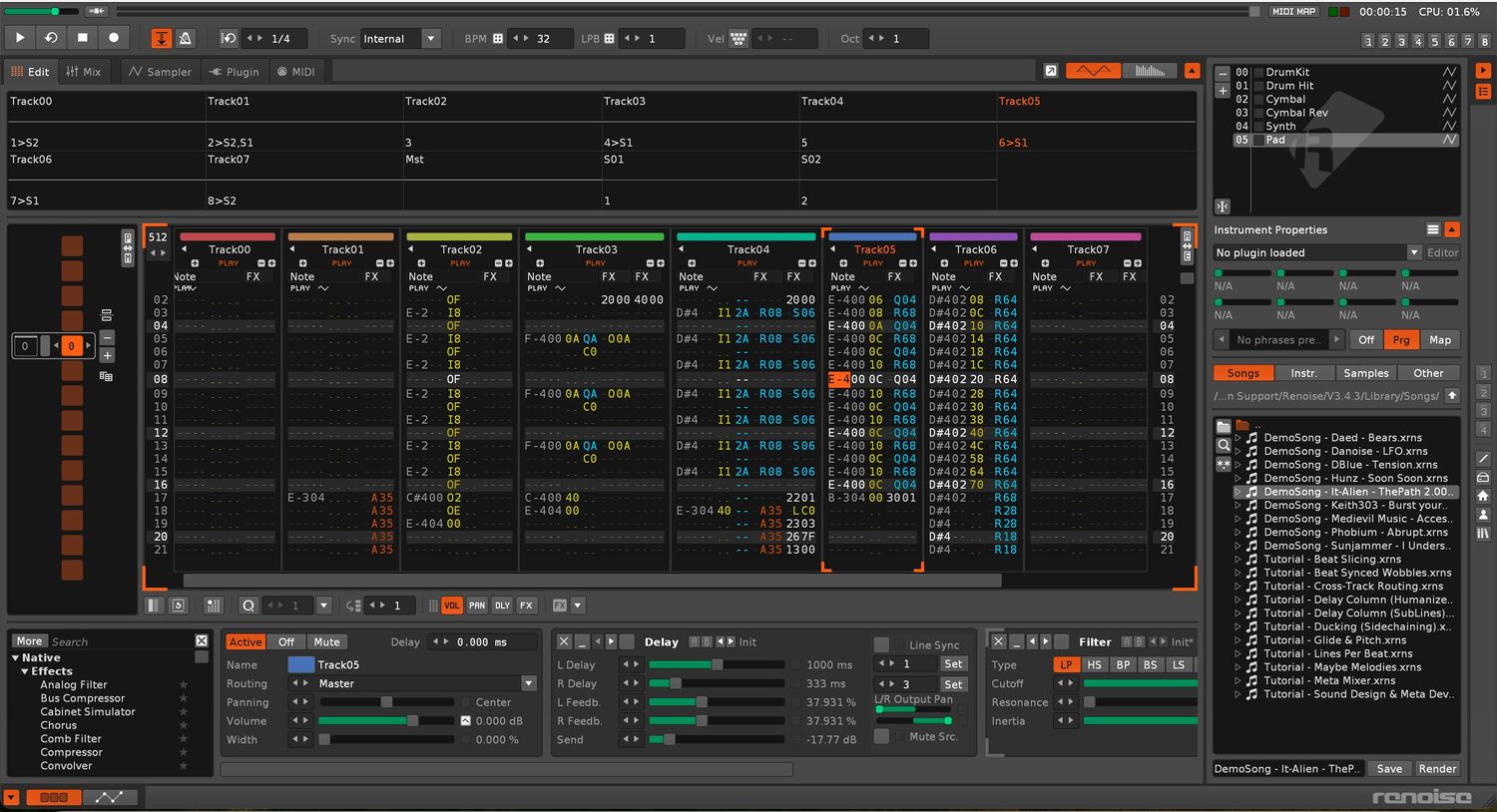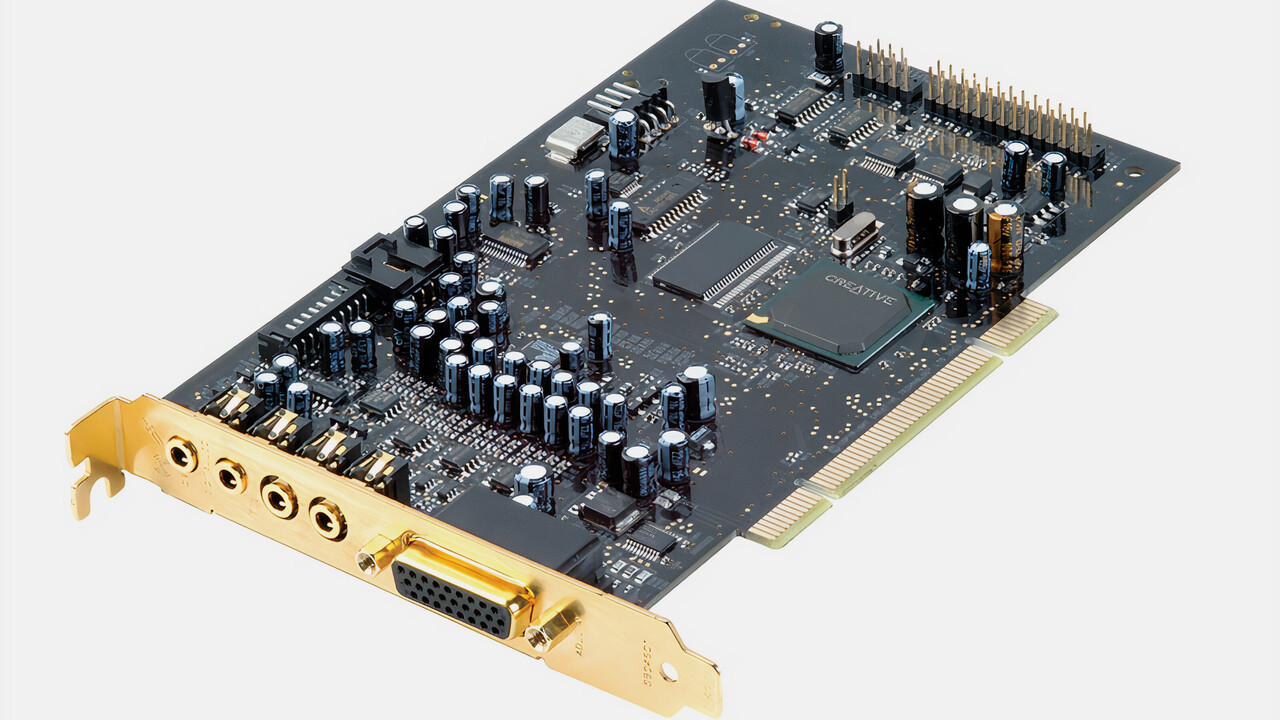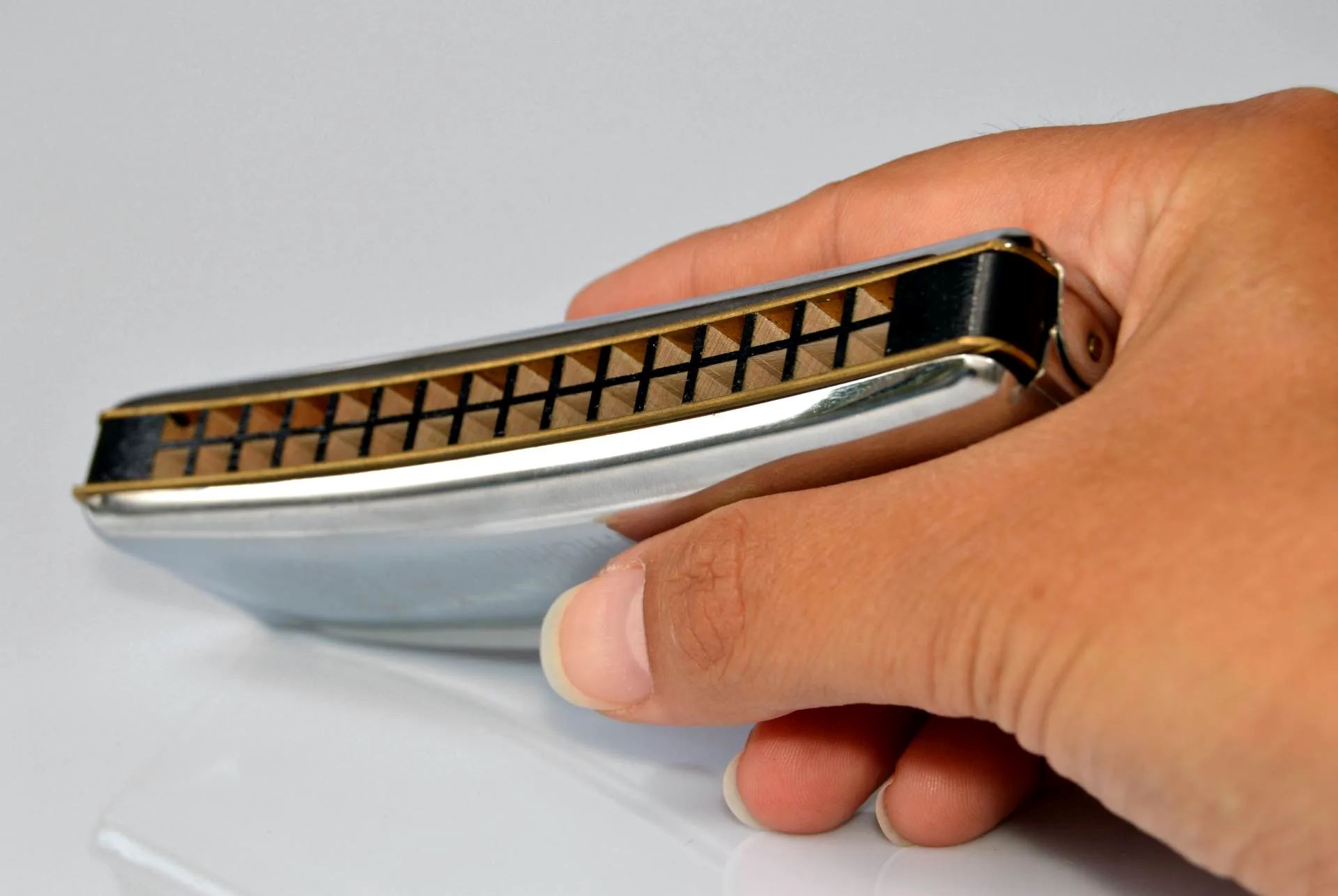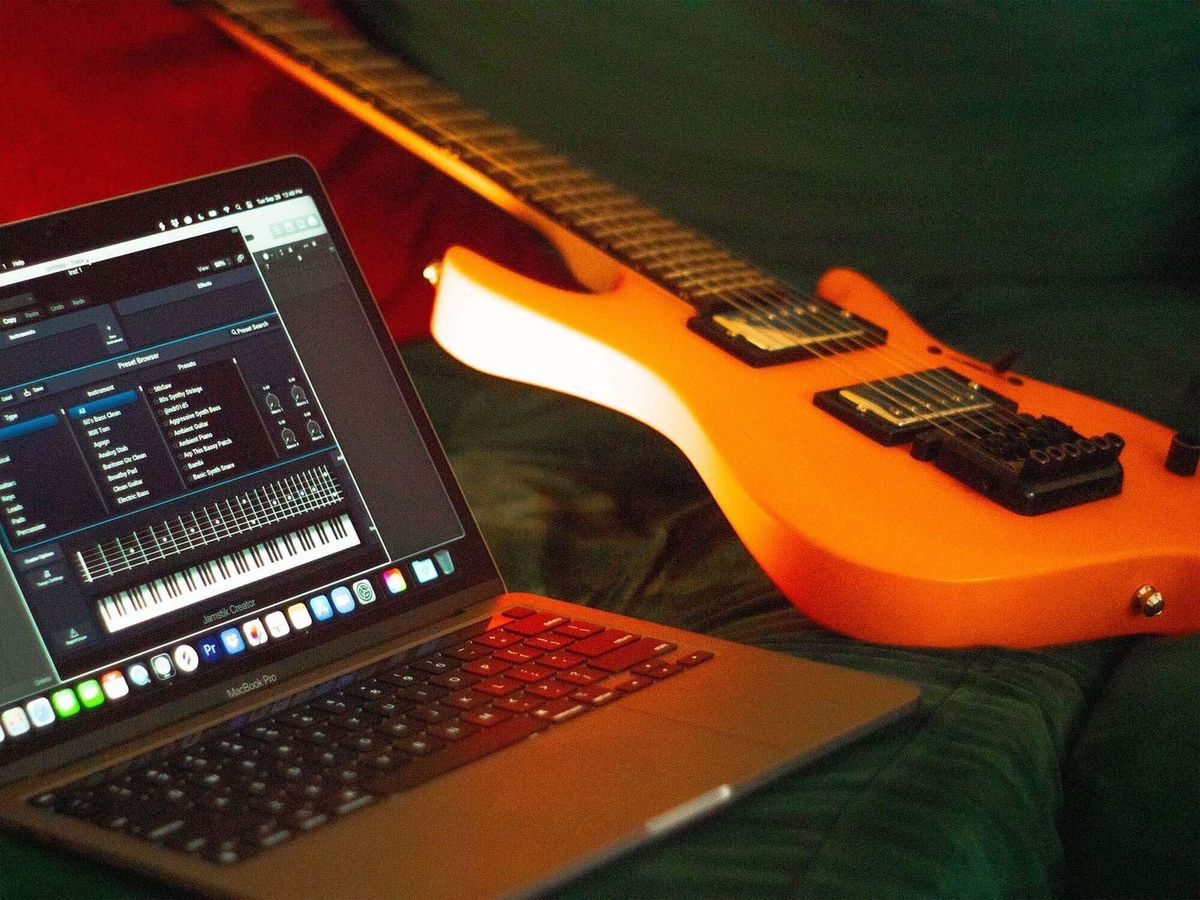Home>Production & Technology>MIDI>How Do You Enable Web MIDI API


MIDI
How Do You Enable Web MIDI API
Published: February 22, 2024
Learn how to enable the Web MIDI API to interact with MIDI devices and create music applications. Explore MIDI integration and implementation.
(Many of the links in this article redirect to a specific reviewed product. Your purchase of these products through affiliate links helps to generate commission for AudioLover.com, at no extra cost. Learn more)
Table of Contents
Introduction
The Web MIDI API has revolutionized the way we interact with musical instruments and devices on the web. It has opened up a world of possibilities for musicians, developers, and music enthusiasts alike. This powerful API enables web applications to communicate with MIDI devices, allowing for seamless integration of hardware and software for creating, recording, and performing music.
As the internet continues to evolve, the Web MIDI API has emerged as a game-changer, providing a standardized protocol for web-based communication with MIDI devices. Whether you're a musician looking to connect your MIDI controller to a web-based music production tool or a developer seeking to incorporate MIDI functionality into a web application, the Web MIDI API offers a versatile and robust solution.
In this article, we'll delve into the intricacies of the Web MIDI API, exploring its capabilities and the steps to enable it across different web browsers. Understanding how to enable the Web MIDI API in popular browsers such as Chrome, Firefox, and Safari is essential for harnessing its full potential and unleashing a world of creative possibilities.
Join us on this journey as we demystify the Web MIDI API, uncovering its significance and practical applications. By the end of this article, you'll be equipped with the knowledge to seamlessly enable the Web MIDI API in your preferred web browser, paving the way for a seamless and immersive MIDI experience on the web. Let's embark on this exploration of the Web MIDI API and unlock its boundless potential.
What is the Web MIDI API?
The Web MIDI API is a powerful and versatile interface that allows web applications to communicate with MIDI devices such as synthesizers, drum machines, MIDI controllers, and other hardware used in music production and performance. MIDI, which stands for Musical Instrument Digital Interface, is a standard protocol for connecting musical instruments and devices, enabling them to transmit and receive musical data.
With the introduction of the Web MIDI API, this established protocol has been seamlessly integrated into web browsers, providing a standardized method for web applications to interact with MIDI devices. This breakthrough has paved the way for innovative web-based music creation, performance, and recording tools, as well as interactive multimedia experiences that leverage MIDI technology.
At its core, the Web MIDI API enables bidirectional communication between web applications and MIDI devices, allowing for a wide range of functionalities. Web developers and musicians can harness the API to create web-based synthesizers, drum machines, sequencers, and interactive music interfaces that directly interface with MIDI hardware. This opens up new avenues for collaborative music-making, live performances, and immersive web-based music experiences.
One of the key advantages of the Web MIDI API is its ability to seamlessly integrate with existing web technologies such as JavaScript, HTML, and CSS. This compatibility empowers developers to leverage their web development skills to create MIDI-enabled applications without the need for additional plugins or software. As a result, the Web MIDI API has become a cornerstone of modern web-based music technology, offering a standardized and accessible means of incorporating MIDI functionality into web applications.
Furthermore, the Web MIDI API supports a wide array of MIDI messages, including note data, control changes, pitch bend, and more. This comprehensive support enables web applications to capture and interpret MIDI input from connected devices, opening up endless possibilities for musical expression and interactivity on the web.
In essence, the Web MIDI API represents a convergence of traditional MIDI technology and the modern web, bridging the gap between hardware and software to unlock new creative possibilities. Its seamless integration with web browsers and support for a diverse range of MIDI devices make it a pivotal tool for musicians, developers, and music enthusiasts seeking to harness the power of MIDI in the digital realm.
Browser Support for Web MIDI API
The widespread adoption of the Web MIDI API has significantly transformed the landscape of web-based music technology, offering a standardized interface for seamless communication between web applications and MIDI devices. As this revolutionary API continues to gain prominence, it is essential to understand the browser support for the Web MIDI API, ensuring compatibility and accessibility across different web platforms.
Chrome
Google Chrome has been at the forefront of embracing the Web MIDI API, providing robust support for MIDI functionality within web applications. As of the latest versions, Chrome offers comprehensive support for the Web MIDI API, allowing developers to integrate MIDI capabilities into their web-based music tools and interactive applications. With Chrome's backing, the Web MIDI API has become a cornerstone of modern web development, enabling the creation of innovative music production and performance platforms that seamlessly interface with MIDI devices.
Firefox
Mozilla Firefox, a prominent player in the web browser arena, has also extended support for the Web MIDI API, empowering developers to leverage MIDI functionality within their web applications. Firefox's commitment to embracing web standards has led to the seamless integration of the Web MIDI API, providing users with a consistent and reliable MIDI experience across the browser. By enabling the Web MIDI API in Firefox, developers can tap into a wealth of MIDI-related possibilities, from creating virtual MIDI instruments to facilitating real-time MIDI communication within web-based music environments.
Safari
Apple's Safari browser has also joined the ranks of web browsers supporting the Web MIDI API, ensuring a cohesive MIDI experience for users across different platforms. With Safari's backing, the Web MIDI API has gained traction in the realm of iOS and macOS-based web applications, expanding the reach of MIDI-enabled experiences to a broader audience. By enabling the Web MIDI API in Safari, developers can harness the power of MIDI to create immersive music production tools, interactive music interfaces, and collaborative web-based music experiences that resonate with users across diverse Apple devices.
In summary, the widespread browser support for the Web MIDI API underscores its significance as a pivotal technology for web-based music creation and interaction. With Chrome, Firefox, and Safari leading the charge in embracing the Web MIDI API, developers and musicians can confidently integrate MIDI functionality into their web applications, fostering a rich ecosystem of MIDI-enabled experiences that transcend traditional boundaries. As the Web MIDI API continues to evolve and gain traction, its robust browser support lays the foundation for a vibrant and innovative web-based MIDI landscape.
Enabling Web MIDI API in Chrome
Enabling the Web MIDI API in Google Chrome is a straightforward process that unlocks the full potential of MIDI functionality within web applications. By activating the Web MIDI API, developers and users can seamlessly connect MIDI devices to web-based music tools, enabling a rich array of interactive and collaborative musical experiences. To enable the Web MIDI API in Chrome, follow these simple steps:
-
Update to the Latest Version of Chrome: Ensure that you are using the latest version of Google Chrome to access the most up-to-date features and optimizations, including comprehensive support for the Web MIDI API. Updating Chrome to the latest release guarantees a seamless MIDI experience within the browser environment.
-
Access Chrome Flags: In the Chrome browser, navigate to the address bar and enter "chrome://flags" to access the experimental features and settings. This interface allows users to enable and configure advanced browser functionalities, including the Web MIDI API.
-
Search for Web MIDI API: Within the Chrome Flags page, use the search bar to locate the "Web MIDI API" option. This feature, when enabled, activates the Web MIDI API within the browser, allowing web applications to establish communication with MIDI devices connected to the system.
-
Enable the Web MIDI API: Once the "Web MIDI API" option is located, click on the dropdown menu and select "Enabled" to activate the API. This action triggers the integration of MIDI functionality into the Chrome browser, paving the way for seamless interaction between web applications and MIDI devices.
-
Relaunch Chrome: After enabling the Web MIDI API, Chrome will prompt you to relaunch the browser to apply the changes. Click on the "Relaunch" button to restart Chrome with the Web MIDI API enabled and ready for use.
With these steps completed, the Web MIDI API is now fully enabled in Google Chrome, empowering users and developers to harness the power of MIDI within web applications. This activation opens the door to a myriad of creative possibilities, from building web-based synthesizers and sequencers to facilitating real-time MIDI communication and collaboration in the digital realm.
By seamlessly integrating the Web MIDI API into Chrome, Google has bolstered the browser's capabilities, positioning it as a versatile platform for MIDI-enabled web experiences. Whether you're a musician exploring web-based music tools or a developer seeking to incorporate MIDI functionality into your applications, enabling the Web MIDI API in Chrome is a pivotal step towards unlocking the full potential of MIDI on the web.
Enabling Web MIDI API in Firefox
Enabling the Web MIDI API in Mozilla Firefox is a seamless process that empowers users and developers to leverage MIDI functionality within the browser environment. By activating the Web MIDI API, Firefox users can seamlessly connect MIDI devices to web-based music tools, unlocking a rich array of interactive and collaborative musical experiences. To enable the Web MIDI API in Firefox, follow these straightforward steps:
-
Update to the Latest Version of Firefox: Ensure that you are using the latest version of Mozilla Firefox to access the most up-to-date features and optimizations, including comprehensive support for the Web MIDI API. Updating Firefox to the latest release guarantees a seamless MIDI experience within the browser environment.
-
Access Firefox Configuration Settings: In the Firefox browser, type "about:config" in the address bar and press Enter to access the advanced configuration settings. This interface allows users to enable and configure experimental browser functionalities, including the Web MIDI API.
-
Accept the Risk: Upon accessing the configuration settings, Firefox may display a warning message highlighting the potential risks of modifying advanced settings. Users are required to proceed with caution and accept the associated risks to access and modify the experimental features.
-
Search for Web MIDI API: Within the configuration settings, use the search bar to locate the "dom.webmidi.enabled" option. This feature, when enabled, activates the Web MIDI API within the browser, allowing web applications to establish communication with MIDI devices connected to the system.
-
Enable the Web MIDI API: Once the "dom.webmidi.enabled" option is located, double-click on it to change the value from "false" to "true." This action effectively enables the Web MIDI API within the Firefox browser, paving the way for seamless interaction between web applications and MIDI devices.
-
Relaunch Firefox: After enabling the Web MIDI API, Firefox may prompt you to restart the browser to apply the changes. Proceed to relaunch Firefox to activate the Web MIDI API, ensuring that it is fully enabled and ready for use.
With these steps completed, the Web MIDI API is now fully enabled in Mozilla Firefox, empowering users and developers to harness the power of MIDI within web applications. This activation opens the door to a myriad of creative possibilities, from building web-based synthesizers and sequencers to facilitating real-time MIDI communication and collaboration in the digital realm.
By seamlessly integrating the Web MIDI API into Firefox, Mozilla has bolstered the browser's capabilities, positioning it as a versatile platform for MIDI-enabled web experiences. Whether you're a musician exploring web-based music tools or a developer seeking to incorporate MIDI functionality into your applications, enabling the Web MIDI API in Firefox is a pivotal step towards unlocking the full potential of MIDI on the web.
Enabling Web MIDI API in Safari
Enabling the Web MIDI API in Apple's Safari browser is a seamless process that empowers users and developers to leverage MIDI functionality within the browser environment. By activating the Web MIDI API in Safari, users can seamlessly connect MIDI devices to web-based music tools, unlocking a rich array of interactive and collaborative musical experiences. To enable the Web MIDI API in Safari, follow these straightforward steps:
-
Update to the Latest Version of Safari: Ensure that you are using the latest version of Safari to access the most up-to-date features and optimizations, including comprehensive support for the Web MIDI API. Updating Safari to the latest release guarantees a seamless MIDI experience within the browser environment.
-
Access Safari Preferences: Open Safari and navigate to the "Safari" menu in the top-left corner of the screen. From the dropdown menu, select "Preferences" to access the browser's settings and configuration options.
-
Navigate to Advanced Settings: Within the Preferences window, click on the "Advanced" tab to access advanced settings and configurations for Safari. This section houses experimental features and options that can be enabled to enhance the browser's capabilities.
-
Enable Develop Menu: In the Advanced tab, check the box next to "Show Develop menu in menu bar" to enable the Develop menu in Safari. This menu provides access to a range of developer-centric features and options, including experimental functionalities.
-
Access Develop Menu: With the Develop menu now visible in Safari, click on "Develop" in the top menu bar to reveal the dropdown options. From the Develop menu, select "Experimental Features" to access a list of experimental functionalities that can be enabled.
-
Enable Web MIDI API: Within the Experimental Features submenu, locate the "Web MIDI" option and click on it to enable the Web MIDI API in Safari. This action activates the API within the browser, allowing web applications to establish communication with MIDI devices connected to the system.
-
Verify Activation: After enabling the Web MIDI API, you can verify its activation by visiting web-based music applications or tools that utilize MIDI functionality. The successful activation of the Web MIDI API in Safari ensures seamless interaction with MIDI devices, opening the door to a wide range of creative possibilities.
By seamlessly integrating the Web MIDI API into Safari, Apple has bolstered the browser's capabilities, positioning it as a versatile platform for MIDI-enabled web experiences. Whether you're a musician exploring web-based music tools or a developer seeking to incorporate MIDI functionality into your applications, enabling the Web MIDI API in Safari is a pivotal step towards unlocking the full potential of MIDI on the web.
With these steps completed, the Web MIDI API is now fully enabled in Safari, empowering users and developers to harness the power of MIDI within web applications. This activation opens the door to a myriad of creative possibilities, from building web-based synthesizers and sequencers to facilitating real-time MIDI communication and collaboration in the digital realm.
Conclusion
In conclusion, the Web MIDI API represents a groundbreaking advancement in web-based music technology, offering a standardized interface for seamless communication between web applications and MIDI devices. Throughout this exploration, we have unveiled the significance of the Web MIDI API and the steps to enable it across popular web browsers. As we conclude this journey, it's essential to reflect on the transformative potential of the Web MIDI API and its implications for musicians, developers, and music enthusiasts.
The Web MIDI API has transcended traditional boundaries, bridging the gap between hardware and software to unlock new creative possibilities in the digital realm. By seamlessly integrating MIDI functionality into web browsers, this API has empowered developers to create innovative web-based synthesizers, drum machines, sequencers, and interactive music interfaces. Moreover, it has facilitated real-time MIDI communication and collaboration, fostering a vibrant ecosystem of MIDI-enabled experiences on the web.
The comprehensive browser support for the Web MIDI API, spanning Google Chrome, Mozilla Firefox, and Apple's Safari, underscores its pivotal role in modern web development. With each of these browsers embracing the Web MIDI API, users and developers can confidently harness MIDI functionality within their preferred browser environment, ensuring a consistent and reliable MIDI experience across diverse platforms.
Enabling the Web MIDI API in Google Chrome, Mozilla Firefox, and Safari has become a pivotal step towards unlocking the full potential of MIDI on the web. By following the simple yet impactful steps to activate the Web MIDI API, users and developers can seamlessly connect MIDI devices to web-based music tools, paving the way for a rich array of interactive and collaborative musical experiences.
As the Web MIDI API continues to evolve and gain prominence, it is poised to shape the future of web-based music creation, performance, and interaction. Its seamless integration with web technologies such as JavaScript, HTML, and CSS has democratized MIDI functionality, allowing developers to leverage their web development skills to create MIDI-enabled applications without the need for additional plugins or software.
In essence, the Web MIDI API has not only revolutionized the way we interact with MIDI devices on the web but has also democratized access to MIDI functionality, fostering a dynamic and inclusive landscape for web-based music experiences. As we look ahead, the Web MIDI API is set to catalyze further innovations in web-based music technology, empowering a new generation of musicians and developers to push the boundaries of creativity and collaboration in the digital realm.











